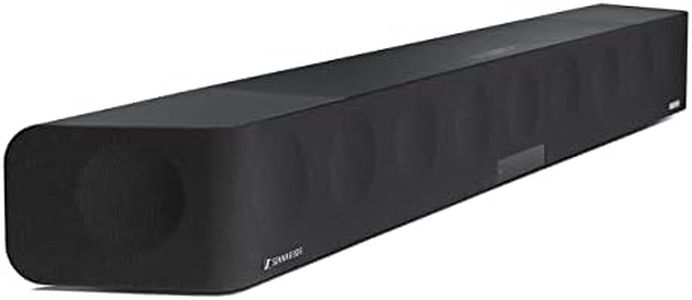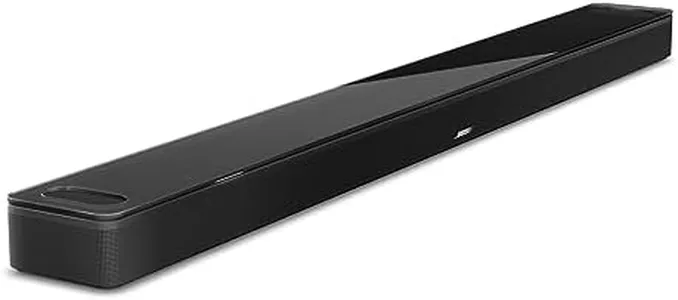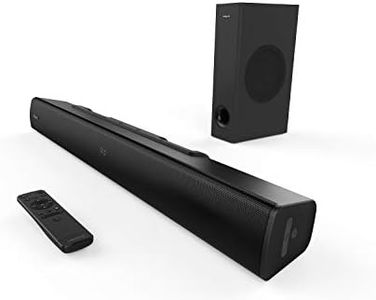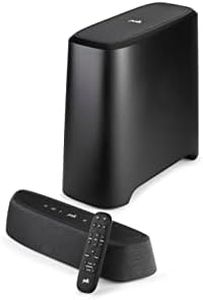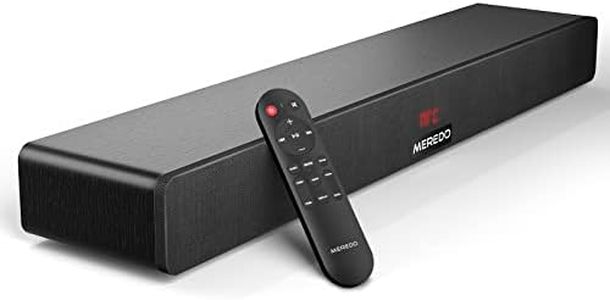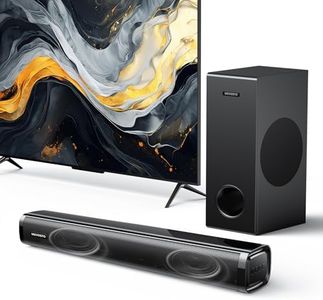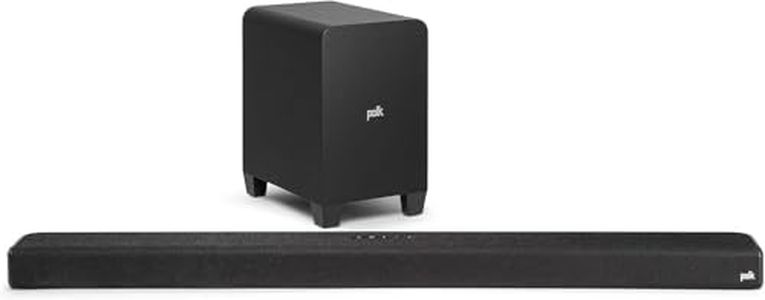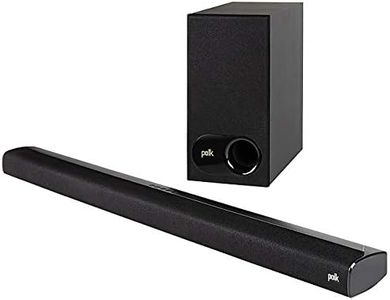We Use CookiesWe use cookies to enhance the security, performance,
functionality and for analytical and promotional activities. By continuing to browse this site you
are agreeing to our privacy policy
10 Best Sound Bar Systems
From leading brands and best sellers available on the web.By clicking on a link to a third party's website, log data is shared with that third party.
Buying Guide for the Best Sound Bar Systems
Choosing the right sound bar system can make a big difference in your TV or home entertainment experience. A sound bar is designed to improve the sound quality of your TV by providing richer, louder, and clearer audio than most built-in TV speakers. The key is to match the sound bar’s features and abilities with your space, listening habits, and expectations. Focus on the essential specs and think about how you plan to use the sound bar, whether it’s for movies, music, gaming, or just everyday TV viewing.ChannelsChannels refer to the separate audio outputs that a sound bar can produce, like 2.0, 2.1, 3.1, 5.1, etc. The first number is the number of main speakers, and the second is if it comes with a subwoofer (that ‘.1’ part). More channels usually mean more immersive surround sound. If you mainly watch regular TV shows or news, a 2.0 or 2.1 setup is simple and effective. For movies or gaming with surround effects, a 5.1 or higher channel sound bar brings a more cinematic experience. Choose based on the type of content you love and how much you want to feel ‘surrounded’ by sound.
SubwooferSubwoofers handle low-frequency sounds or bass, giving depth and punch to music and effects. Some sound bars come with a built-in subwoofer, some include a separate wireless or wired subwoofer, and some skip it altogether. If you watch action movies, play games, or love music with deep bass, having a dedicated subwoofer is a big plus. For smaller rooms or if you don’t need a lot of bass, a sound bar without a separate subwoofer might be enough.
Audio Formats SupportedSound bars support different audio formats, like Dolby Digital, DTS, or Dolby Atmos. These formats determine how sound is processed and delivered. Basic formats like Dolby Digital are common and offer decent surround effects. Advanced formats like Dolby Atmos add a 3D feel, letting you hear sounds from above and all around. If you want the most immersive experience and your streaming services or devices support these formats, look for a sound bar that handles them. If you just want an upgrade from TV speakers, basic format support will do.
Connectivity OptionsConnectivity means how the sound bar connects to your TV and other devices—options include HDMI (ARC/eARC), optical, Bluetooth, Wi-Fi, and analog audio. HDMI ARC or eARC is the easiest and best for most modern setups, supporting the highest quality sound. Optical is a solid backup for older TVs. Bluetooth and Wi-Fi let you play music wirelessly from your phone or tablet. Think about your TV’s outputs and your streaming habits. Make sure your sound bar and TV can connect easily, and consider wireless features if you want to stream music.
Size and PlacementThe size of the sound bar should match your TV and fit comfortably in your room—too big may overpower your setup, too small might not fill the space with sound. Also, consider where you’ll place it: on a TV stand, wall-mounted, or under the TV. Some sound bars work best when placed directly in front of the TV, while others are designed for wall mounting. Measure your available space and pick a sound bar that fits both aesthetically and practically.
Smart Features and Voice AssistantsSome sound bars include smart features like voice assistants (Amazon Alexa, Google Assistant), Chromecast, or AirPlay. These let you use voice commands, stream music directly from your favorite apps, or integrate with your smart home. If you use smart devices or prefer hands-free controls, pick a sound bar with the appropriate assistant or built-in casting features. If that’s not important to you, a simpler model might be less confusing and easier to use.
